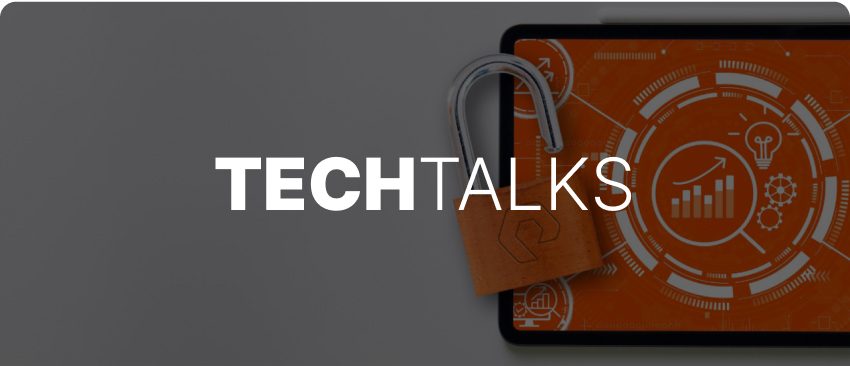サイバー攻撃が可能であるだけでなく避けられない時代においては、リスクを特定して軽減するための積極的な戦略を採用する必要があります。脅威モデリングは、このようなアプローチの 1 つであり、脆弱性の評価、脅威の理解、重要な資産の保護のための構造化された方法を提供します。
OCTAVE(Operationally Critical Threat、Asset、Vulnerability Evaluation)脅威モデルは、サイバーセキュリティのリスク管理のための包括的なフレームワークとして際立っています。カーネギーメロン大学のソフトウェア工学研究所が設計した OCTAVE は、技術的な評価だけでなく、組織の優先事項も含まれています。この二重アプローチは、サイバーセキュリティ対策をビジネス目標と整合させるのに特に適しています。
この記事では、OCTAVE 脅威モデルについて詳しく解説し、レジリエンとなサイバーセキュリティ戦略を構築するためのコンポーネント、方法論、メリット、実用的な応用例について探ります。
OCTAVE 脅威モデルとは?
OCTAVE(Operationally Critical Threat、Asset、Vulnerability Evaluation)脅威モデルは、サイバーセキュリティのリスクを特定、評価、軽減するために設計されたリスクベースのフレームワークです。OCTAVE は、テクノロジーを主眼とする従来のモデルとは異なり、セキュリティ・プラクティスと組織の目標の整合性を重視し、重要な運用への影響を背景にリスクが評価されるようにしています。
OCTAVE は、3 つの重要な要素を統合しています。
- 運用上重要な脅威(Operationally critical threats):業務を中断させる可能性のある行動や事象を特定する
- 資産(Assets):機密データから主要なインフラまで、最も重要なものを優先する
- 脆弱性(Vulnerabilities):これらの資産を脅威にさらす可能性のある弱点を理解する
OCTAVE 脅威モデルの主要要素
OCTAVE の有効性は、3 つのコア・コンポーネントを中心に構築された包括的なアプローチにあります。
資産
資産は、OCTAVE モデルの基盤です。有形・無形を問わず、組織にとって価値があり、保護を必要とするリソースです。
- 情報資産:これには、顧客情報、知的財産、企業秘密などの機密データが含まれます。例えば、医療提供者の電子医療記録(EHR)システムは、患者のケアや規制遵守に不可欠な情報資産です。
- インフラ資産:サーバー、ネットワーク機器、ストレージ・システムは、IT 運用のバックボーンを形成します。これらの資産を保護することで、事業継続性がスムーズになります。
- 人的資産:従業員は重要な役割を担っています。専門知識とアクセスにより、重要なシステムを保護・公開できるからです。インサイダーの脅威は、意図的であろうと偶発的であろうと、多くの場合、このカテゴリーで重要な焦点となります。
脅威
脅威とは、脆弱性を悪用し、資産に損害を与える可能性のある行動、イベント、状況をさします。OCTAVE は、発生源に基づいて脅威を分類します。
- 外部からの脅威:これらは、ハッカー、自然災害、サプライチェーンの混乱など、組織外から発生します。例えば、重要なインフラを標的とするランサムウェア攻撃は、外部の脅威に分類されます。
- 内部脅威:これらは組織内で発生し、多くの場合、従業員、請負業者、信頼できるパートナーから発生します。認証情報の取り扱いミスなどの過失や、データ窃盗などの悪意のある行為は、このカテゴリに該当します。
脆弱性
脆弱性とは、組織のシステム、プロセス、ポリシーにおける弱点で、脅威によって悪用される可能性があるものです。一般的な例としては、古いソフトウェア、ファイアウォールの設定不良、フィッシングに関する従業員のトレーニングの欠如などがあります。例えば、従来のシステムで運用されている eコマース企業は、古い暗号化プロトコルが顧客の決済データを潜在的な侵害にさらしていることに気づくかもしれません。
OCTAVE は、これらのコンポーネントを並行して分析することで、組織がリスクに対処するための優先ロードマップを作成するのに役立ちます。
OCTAVE 手法の 3 つのフェーズ
OCTAVE 手法は 3 つのフェーズに分かれており、それぞれが包括的なリスク管理戦略に貢献しています。
フェーズ 1:アセットベースの脅威プロファイルの構築
このフェーズでは、組織の重要な資産と、組織が直面する脅威を理解することに焦点を当てます。このプロセスには、以下が含まれます。
- 資産の特定:チームは重要な情報、インフラ、人事をカタログ化します。例えば、製造会社は、生産ラインの制御システムを優先度の高い資産として挙げる場合があります。
- プロファイリングの脅威:潜在的な脅威は、各資産にマッピングされます。例えば、スマート・ファクトリーのモノのインターネット(IoT)デバイスを対象としたサイバー攻撃は、生産を混乱させる可能性があります。
このフェーズの結果は、保護の必要性と、各資産に関連する具体的なリスクを明確に示しています。
フェーズ 2:インフラの脆弱性を特定
このフェーズでは、組織は技術環境を評価し、資産を脅威にさらす可能性のある脆弱性を明らかにします。アクティビティには、次のようなものがあります。
- 技術評価:脆弱性スキャナーなどのツールは、システム、ネットワーク、アプリケーションの弱点を特定します。
- コンテキスト分析:調査結果は運用リスクと相関し、実際の影響を評価します。
例えば、ある金融機関がパッチが適用されていないデータベース・サーバーを発見した場合、この脆弱性が顧客の財務データへの不正アクセスの潜在的リスクにつながる可能性があります。
フェーズ 3:セキュリティ戦略と計画の策定
最終フェーズでは、最初の 2 つの段階からのインサイトを実用的な戦略に変換します。主な手順は、次のとおりです。
- リスクの優先順位付け:リスクは、その可能性と潜在的な影響に基づいてランク付けされます。例えば、顧客対応アプリケーションに影響を与えるリスクは、内部報告ツールよりも優先されます。
- 軽減計画:ポリシー、技術、プロセスは、優先順位の高いリスクに対応するために開発されています。ピュア・ストレージの SafeMode スナップショットなどのツールを使用して、組織は不変のバックアップを作成することで、重要なデータをランサムウェア攻撃から保護できます。
このフェーズでは、リソースが最も重要なリスクに向けられ、セキュリティ活動の影響を最大化します。
OCTAVE 脅威モデルのメリット
OCTAVE フレームワークを採用する組織は、サイバーセキュリティ体制を強化するだけでなく、包括的なビジネス目標にあわせてセキュリティの取り組みを調整する、さまざまな戦略的メリットを得ることができます。
包括的なリスク管理
OCTAVE は、技術面とビジネス面の両方を融合させることで、リスク管理に徹底した統合アプローチを採用しています。これにより、組織は重要な資産や運用上の優先事項に照らしてサイバーセキュリティ・リスクを評価することができます。この二重の焦点は、脆弱性の特定だけでなく、事業継続性と目標に対する潜在的な影響の点からも確実に理解されるようにします。OCTAVE は、組織的な状況を考慮することで、単に孤立した技術的脅威に焦点を当てるのではなく、ビジネスにとって本当に重要なリスク・シナリオの特定を容易にします。
リソースの優先順位付け
OCTAVE は、限られたリソースを最も効果的に配分するためのデータ駆動型の意思決定を可能にします。機密性の高い顧客データ、知的財産、コア・オペレーション・インフラなどの価値の高い資産に焦点を当て、ビジネスの最も重要な要素を最初に保護します。この優先順位付けにより、リソース配分の可能性が低減され、影響の少ないセキュリティ対策が可能になり、より効率的なセキュリティ戦略が可能になります。セキュリティ投資をビジネスの優先事項にあわせることで、OCTAVE は不要なコストを最小限に抑え、ROI を最大化します。
プロアクティブな脅威対策
OCTAVE フレームワークの主な利点は、組織がサイバーセキュリティに対してプロアクティブなアプローチを取るのを支援する能力です。OCTAVE は、将来を見据えた考え方を奨励することで、リスクの予測と、潜在的な脅威が実際の侵害やインシデントに発展する前にそれらに備えることができます。この先見性は、より効果的な脅威軽減戦略につながります。例えば、OCTAVE のリスク評価プロセスを使用して、ミッションクリティカルなシステムの潜在的な脆弱性、例えば、古いバージョンのソフトウェア、誤った設定のネットワーク、不十分なアクセス制御などを特定し、悪用を防ぐためのパッチ適用や設定変更などの是正措置を実施することができます。これにより、攻撃やデータ侵害が成功する可能性が大幅に低減され、経済的損失や評判の低下を回避できます。
組織全体のリスク認識の強化
OCTAVE は、組織のさまざまなレベルの主要なステークホルダーをリスク評価プロセスに関与させることで、セキュリティ意識の文化を育みます。この広範な参加は、セキュリティが単に技術的な懸念ではなく、組織の全体的なリスク管理戦略の不可欠な部分であると見なされることを保証します。OCTAVE は、ビジネスリーダー、技術専門家、運用スタッフからのインサイトを取り入れることで、リスクに関するより包括的で総合的に理解するのに役立ちます。この協力的なアプローチは、リーダーシップからの賛同を高め、部門間のコミュニケーションを強化し、より効果的なリスク管理につながります。
スケーラビリティと適応性
OCTAVE は適応性が高く、小規模スタートアップから大規模多国籍企業まで、さまざまな規模やセクターの組織にあわせて拡張できます。柔軟な性質により、組織の成長や新たな脅威の発生に応じて進化する、カスタマイズされたリスク管理アプローチが可能になります。OCTAVE は、急速に拡大するテクノロジー企業でも、製造企業でも、常に変化する状況で引き続き関連するサイバーセキュリティ・リスクを管理するための構造化されたカスタマイズ可能な方法を提供しています。
OCTAVE 脅威モデルの導入方法
OCTAVE 脅威モデルの導入には、サイバーセキュリティ・リスクを効果的に評価・管理できる体系的なアプローチが必要です。これらの重要なステップに従うことで、組織はモデルがセキュリティ・フレームワークに統合され、より広範なビジネス目標と整合させることができます。
- 学際的なチームを編成
IT、オペレーション、リーダーシップの代表者を集め、バランスの取れた視点を確保します。
- 目標を定義
ダウンタイムの削減、機密データの保護、規制コンプライアンスの達成など、明確な目標を設定します。
- データを収集
インタビュー、調査、技術評価を実施し、資産、脅威、脆弱性に関するインサイトを収集します。
- ポリシーの開発と実施
特定されたリスクに対処するポリシーを作成します。例えば、ロールベースのアクセス制御(RBAC)を実装することで、不正アクセスを最小限に抑えます。
- 監視と更新
進化するリスクに適応するために、脅威モデルを定期的に見直し、更新します。
まとめ
OCTAVE 脅威モデルは、サイバーセキュリティをビジネス目標と整合させようとする組織のための強力なツールです。OCTAVE は、資産の優先順位付け、リスクの評価、脆弱性の積極的な軽減により、サイバーセキュリティに対する包括的でレジリエントなアプローチを可能にします。
ピュア・ストレージの SafeMode スナップショット、ActiveDR、Pure Cloud Block Store などの高度なツールと組み合わせることで、重要な資産を保護し、インシデントから復旧する機能を強化できます。これらのソリューションは、比類のない信頼性を提供し、絶えず変化する脅威の状況でビジネスの安全性を維持します。





